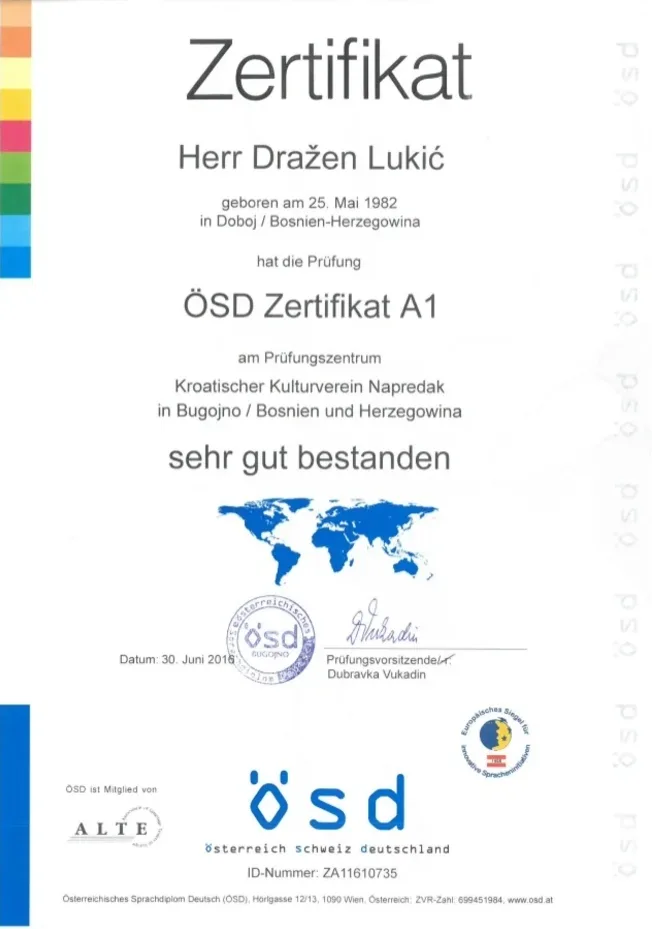Comprehending the ÖSD B2 Certification: A Comprehensive Guide for German Learners
In the landscape of language qualifications, the ÖSD B2 accreditation stands out as a substantial turning point for students of the German language. Attaining efficiency at this level opens numerous avenues, both academically and expertly, while likewise improving cultural understanding and personal development. This short article aims to supply a helpful introduction of the ÖSD B2 certification, detailing its significance, structure, preparation methods, and often asked concerns.
What is the ÖSD B2 Certification?
The ÖSD (Österreichisches Sprachdiplom Deutsch) B2 certification is a main language certification that examines intermediate efficiency in the German language. It is especially recognized in Austria, Germany, and Switzerland, making it a valuable property for those preparing to study or operate in these countries.

At the B2 level, learners are anticipated to:
Understand the primary ideas of intricate texts on both concrete and abstract subjects.
Interact with fluency and spontaneity with native speakers.
Produce clear, comprehensive texts on a vast array of topics associated to their interests.
Why is the ÖSD B2 Certification Important?
Academic Opportunities: Many universities in German-speaking nations need a minimum of B2-level efficiency for admissions, especially for courses taught in German.
Expert Advantages: Employers often look for prospects with acknowledged language certifications, and B2 efficiency shows the capability to communicate efficiently in professional settings.
Cultural Integration: Achieving this level can deepen one's understanding of German culture, society, and nuances of daily language.
Structure of the ÖSD B2 Exam
The ÖSD B2 examination comprises four primary parts: Listening, Reading, Writing, and Speaking. Each section assesses various proficiencies within the language capability.
1. Listening Comprehension
In this section, test-takers listen to various audio clips such as conversations, report, and conversations. They are required to respond to questions that determine their understanding of content, tone, and implications.
2. Checking out Comprehension
This part consists of different written materials like short articles, ads, and e-mails. Prospects require to demonstrate their capability to understand the context and crucial ideas, in addition to translate different types of texts.
3. Writing
Candidates are asked to write a text based on a specific subject, frequently requiring structured arguments and coherent thinking. This could include writing essays, reports, or formal letters.
4. Speaking
The speaking assessment normally consists of two parts: a monologue and a dialogue with an inspector. Test-takers must interact successfully, reveal viewpoints, and react to questions plainly.
Scoring System
Each element is scored individually, and to pass, prospects normally need to attain a typical rating throughout all sections. The grading requirements concentrate on language efficiency, coherence, fluency, and the capability to engage in discussion.
Preparation Strategies for ÖSD B2
Preparing for the ÖSD B2 exam can be a demanding yet gratifying endeavor. Here are some effective methods that can enhance your preparation:
1. Acquaint Yourself with the Exam Format
Evaluation previous exam papers to understand the kinds of questions and tasks included.
Record yourself during practice speaking sessions to improve fluency and articulation.
2. Develop Your Vocabulary
Create vocabulary lists based upon typical styles for the B2 level, such as Work, Environment, and Health.
Usage flashcards and language apps to strengthen learning.
3. Practice Listening Skills
Listen to German podcasts, news stations, and audiobooks that consist of a series of subjects and accents.
Participate in routine conversation practice with native speakers, either personally or online.
4. Take Mock Exams
Imitate exam conditions by taking practice tests within the designated time frame.
Evaluate your efficiency to determine areas for improvement.
5. Join Study Groups
Collaborate with fellow learners to practice speaking and exchange resources.
Engage in discussions that challenge your understanding of complicated subjects.
Typical Questions about ÖSD B2
FREQUENTLY ASKED QUESTION
Q1: How long is the ÖSD B2 accreditation valid?
A1: The ÖSD B2 certificate does not expire, however it is suggested to keep your language abilities updated through continuous practice and usage.
Q2: What resources are advised for preparing for the ÖSD B2 exam?
A2: Books particularly created for B2 preparation, online courses, language exchange platforms, and main ÖSD practice materials are recommended for reliable study.
Q3: Where can I take the ÖSD B2 exam?
A3: The ÖSD B2 exam can be taken at different language schools, universities, and ÖSD evaluation centers worldwide. It's recommended to look for scheduled dates in your region.
Geothe Zertifikat 4 All : What if I fail the exam?
A4: Candidates can retake the ÖSD B2 exam as sometimes as needed to achieve the wanted outcome. Nevertheless, it's frequently advantageous to require time to improve language abilities before reattempting.
Conclusion
The ÖSD B2 accreditation represents a crucial step in the journey of mastering the German language. By comprehending the structure of the exam, utilizing reliable preparation methods, and using available resources, learners can enhance their efficiency and accomplish their language objectives. Eventually, the advantages of attaining the B2 certificate extend beyond academia and employment, enhancing the cultural and social experiences of those who strive to discover German. Starting this journey is not just about passing an exam; it's about accepting a language that opens doors to new chances and experiences.
